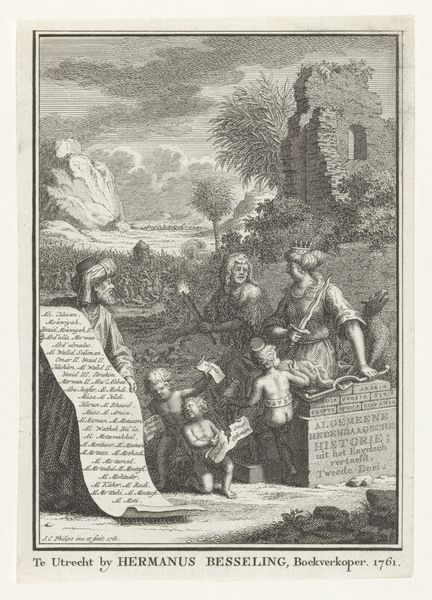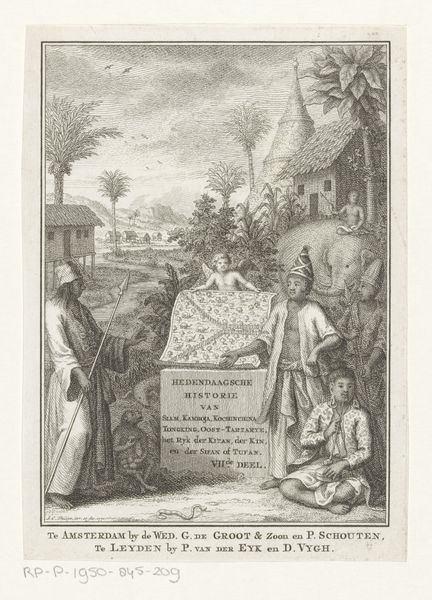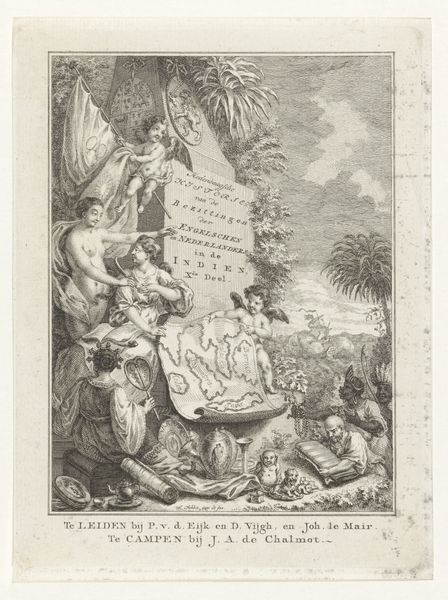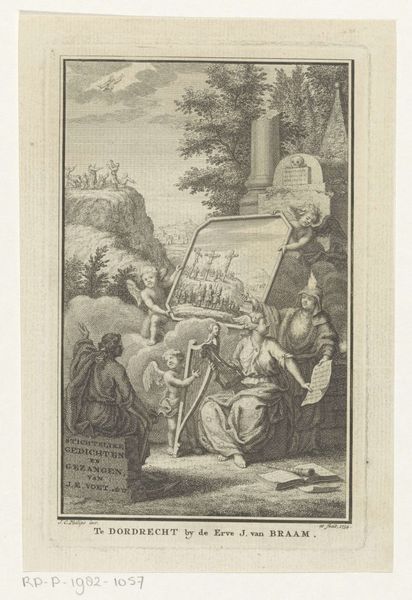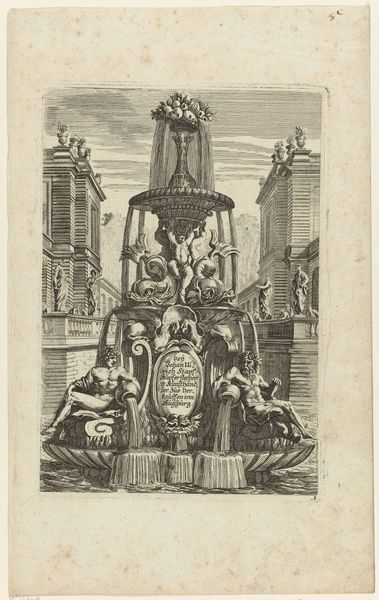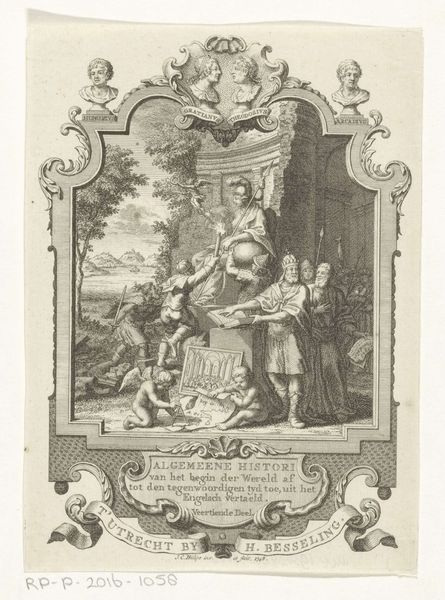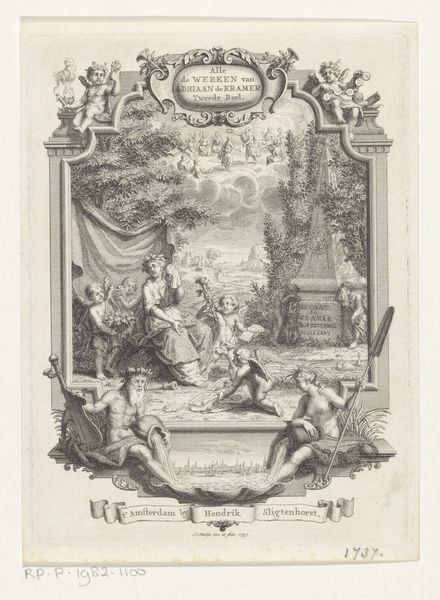
print, etching, engraving
#
allegory
#
baroque
#
parchment
# print
#
etching
#
old engraving style
#
traditional media
#
history-painting
#
engraving
Dimensions: height 171 mm, width 104 mm
Copyright: Rijks Museum: Open Domain
Curator: This etching, "Putti en vrouw met kaart van het Duitse Rijk," was created by Jan Caspar Philips in 1736. It's currently held here at the Rijksmuseum. Editor: My initial response is drawn to its monochromatic quality. The stark contrasts create a somber yet refined visual experience; its dense composition gives it a contained but complex dynamic. Curator: Absolutely. Understanding the political landscape of 18th-century Europe, specifically within the fragmented territories that would later form Germany, is key here. The allegorical figures – the putti, the woman, along with the map itself, serve as commentary on the aspirations and inherent instability of imperial ambitions at the time. It is very much tied to history-painting thematic. Editor: Agreed. Beyond the contextual underpinnings, note the use of line. Philips employs fine, delicate etching to define forms. The composition leads our eye to linger. Note also how elements of traditional media, as per engraving, coalesce into an evocative presentation—the density and shading amplify symbolic representation Curator: It's also important to look at how Philips uses the allegorical figures, like that woman pointing with her instrument, and juxtaposes them against symbols of power, such as the bust of a nobleman. This juxtaposition questions the moral authority of rulers while hinting at underlying narratives. The traditional values, with contemporary interpretations through these figures, reflect the cultural climate and growing sociopolitical discussions. Editor: From a formal standpoint, this interplay introduces tension; a push and pull visually reflecting this power dynamic. Consider the architectural backdrop with classic pillars too; they create balance, which juxtaposes the image’s theme in favor of compositional structure. Curator: These visual cues further enrich the context for today's viewers, highlighting societal impacts beyond single interpretations. It brings elements of philosophy from that era with present interpretations. Editor: Indeed. Ultimately, by exploring both its intricate structure and wider framework, we come closer to knowing Philips' work's nuanced perspective on its culture. Curator: I am constantly challenged and rewarded by this artwork as the social commentaries it suggests prompt fresh debate for our times, encouraging necessary contemplation concerning modern identity, fairness, and power relations in current establishments.
Comments
No comments
Be the first to comment and join the conversation on the ultimate creative platform.
